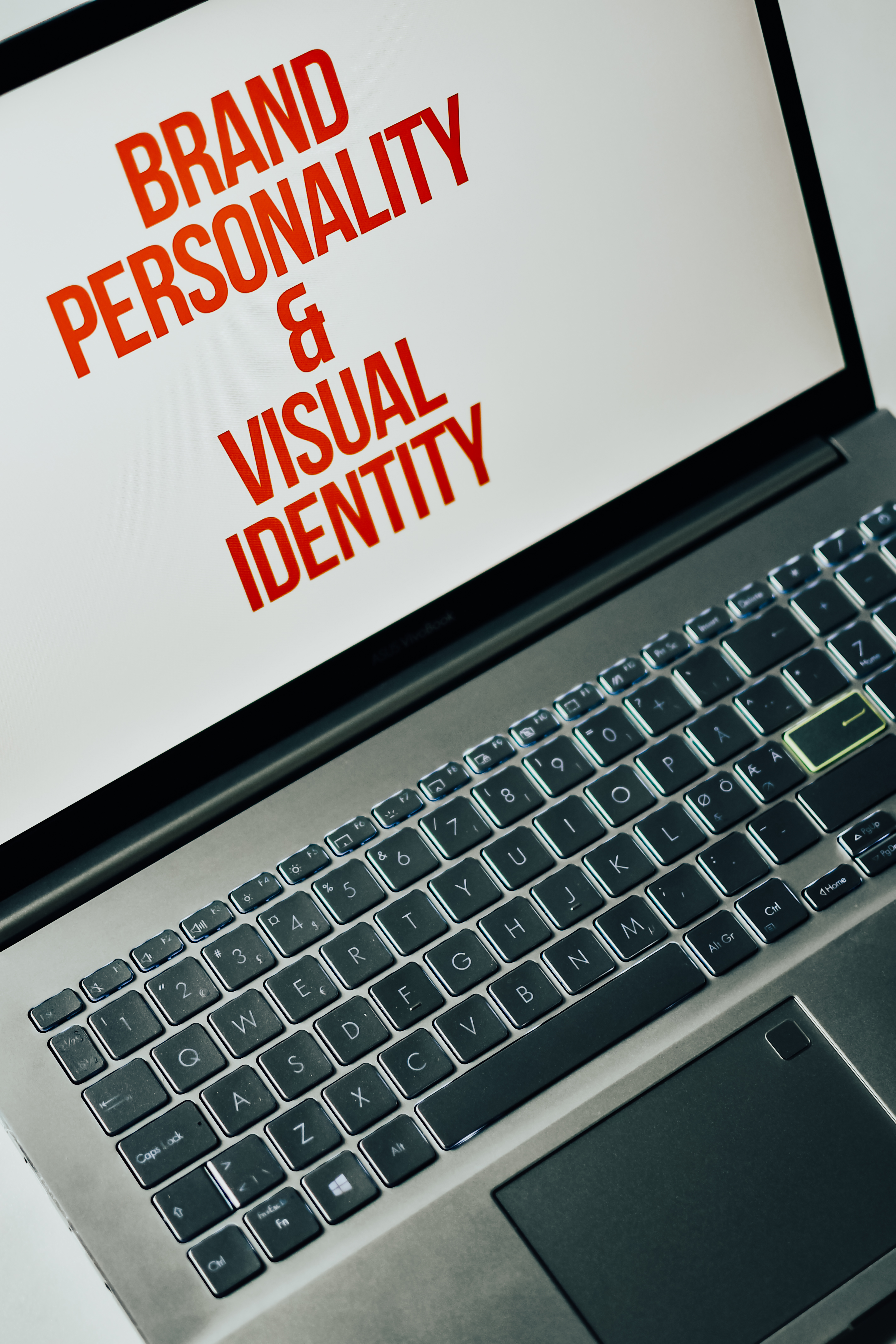Nearly 90% of consumers read online reviews for local businesses—don’t let a weak local SEO reputation drive them to your competitors. If you’re a business owner in Sterling Heights, the fight for visibility and credibility happens every day—and often, in real time on local search results pages. Local SEO reputation has become the deciding factor for customers when choosing between you and your rivals. By acting now, you can seize a competitive edge, attract more potential customers, and turn your business into a local favorite. This guide will show you proven steps to improve your local SEO reputation fast.
A Critical Look at Local SEO Reputation: Why It Matters More Than Ever Nearly 90% of consumers read online reviews for local businesses—don’t let a weak local SEO reputation drive them to your competitors. Your local SEO reputation is no longer just a ‘nice-to-have’—it’s become a must-win battle in Sterling Heights. Appearing at the top of local searches and building trust through positive Google reviews will directly impact your revenue. In a digital landscape dominated by frequent local searches, even one negative review can send potential customers straight to your competition.
Consider this: customers searching “best pizza near me” or “Sterling Heights plumber reviews” don’t just glance at business names—they actively compare Google reviews, business profiles, star ratings, and response rates. These signals are fundamental to building trust. With Google business profiles and social media also factoring heavily into search engine results, there’s more pressure than ever to actively cultivate and manage your online reputation. Now is the time to start making deliberate improvements that will pay off in higher local search ranking, increased foot traffic, and ongoing growth for your business.
What is Local SEO Reputation in Sterling Heights?
In Sterling Heights, your local SEO reputation encompasses everything that shapes how your business is perceived online—especially when it comes to visibility in local search results. This includes your Google business profile, the consistency of your NAP (Name, Address, Phone number) across directories, the volume and sentiment of Google reviews, as well as activity and engagement on social media platforms. Think of it as an ongoing process: improving your listing accuracy, managing customer feedback, and showcasing community engagement all fuel your local business’s rise in local search rankings. When optimized correctly, your local SEO reputation becomes the bridge connecting you to potential customers who are ready to take action.
What You’ll Learn About Boosting Local SEO Reputation How to optimize your local business profile for better local search rankings
Strategies to generate more positive reviews and manage Google reviews
Best practices for leveraging Google Business, social media, and local keyword targeting
Quick action steps to monitor, maintain, and boost your local SEO reputation Understanding Local SEO and Its Impact on Local Search
Local SEO is the science and art of optimizing your business so you’re easily found by people searching for services or products in your area. The higher your business appears in local searches—whether on Google Maps, Google’s Local Pack, or organic search results—the more likely it is you’ll attract new customers. In Sterling Heights, a strong local SEO reputation is the surest way to beat out the competition, especially as more consumers turn to their devices for instant recommendations before making purchases or visiting stores.
Optimizing your local SEO reputation means going beyond keywords. It involves managing your Google business profile, ensuring you receive and respond to Google reviews, keeping information like your phone number and address up-to-date on local business directories, and producing content that appeals directly to local search intent. By mastering these elements, your Sterling Heights business will move up in search engine ranking and attract genuinely interested, higher-quality leads.
Why Local SEO Reputation Is the Foundation of Local Search Ranking
Your reputation in local search is shaped by many factors, but the most powerful is what customers say about you online. For local businesses in Sterling Heights, Google reviews, star ratings, and response rates have a direct impact on local search ranking. Search engines like Google scan business profiles for positive signals—including the volume and quality of reviews—as well as business information accuracy and engagement. A polished, actively managed local SEO reputation sends trust signals to both potential customers and search engines, putting your business at the forefront of relevant searches.
Additionally, active management of your reputation helps buffer you against the occasional negative review. When your review profile is dominated by verified, recent, and positive feedback, a single critique is less likely to damage your standing. In contrast, businesses with sporadic or negative sentiment tend to drop in search result prominence, giving competitors an edge.
Google Reviews, Google Business Profiles, and Local Search Ranking
Google Reviews are often the tie-breaker between two local businesses appearing in the same search result. When your Google business profile features a high rating, abundant positive reviews, and detailed owner responses, it signals both reliability and activity to search engines. Local SEO is powered by these trust markers, which means every additional review and every owner response is another opportunity to climb in local search ranking.
Role of Positive Reviews and Google Review Management
Effective review management goes beyond collecting positive feedback. Timely, thoughtful responses—especially to both positive and negative reviews—show buyers and search engines that your local business is attentive and invested in customer experience. Regularly encouraging customers to leave Google reviews, thanking them for their feedback, and swiftly addressing concerns are all best practices that support a winning local SEO reputation strategy.
First Steps: Auditing Your Local SEO Reputation
Before you boost your local SEO reputation, it’s crucial to conduct an honest audit. A local SEO reputation audit reveals where your business stands in local search ranking, what’s working, and where urgent improvements are needed. Done right, you’ll discover gaps in your Google business profile, inconsistent directory information, and untapped opportunities for gaining more positive reviews. This assessment sets a clear plan for progress, preventing wasted effort and maximizing your digital marketing strategy in Sterling Heights.
Assessing Your Current Local SEO Reputation and Business Profile
Begin by searching for your business name on Google—what appears first? Review your Google business profile for completeness, from hours of operation to service descriptions. Next, examine which directories list your business and whether your business profile information (including your phone number and address) is correct. Explore the latest Google reviews and search engine results to see what customers are saying and how you’re presented across platforms. Identifying outdated info or negative sentiment is the first step toward boosting your reputation in local search results.
Checking Google Business Profile Accuracy
An incomplete or outdated Google business profile can hurt your local SEO. Make sure your business name, address, phone number, and hours are accurate and consistent everywhere. Check for possible duplicates that split your ranking power. Update each section—especially attributes that influence how you appear in local searches, like categories, photos, and service areas. Every small improvement helps the search engine understand and rank your business, bringing more potential customers to your digital doorstep.
Evaluating Online Review Sentiment Across Google Reviews and Social Media
Analyze your Google reviews and social media feedback for patterns. Are most reviews positive, or do a few negative comments dominate? Evaluate response speed, tone, and whether you’re publically resolving issues. Use social media monitoring tools to catch mentions of your business and address them publicly when appropriate. A well-rounded view of sentiment guides you in creating a focus for your review management strategy, ensuring you can quickly close gaps and strengthen your business’s local SEO reputation. Checklist for Local SEO Reputation Audit Audit Area
Task
Status Google Business Profile
Review and update all business details
☐ Google Reviews
Evaluate overall sentiment and frequency
☐ Directory Listings
Ensure name, address, and phone number consistency
☐ Online Review Responses
Monitor and respond to both positive and negative reviews
☐ Social Media Presence
Check for business mentions and direct engagement
☐ Optimizing Your Local Business Profile for Local SEO Reputation
Your Google business profile is the anchor of your local SEO reputation in Sterling Heights. Ensuring that every element is filled out, accurate, and updated helps you rise in local search rankings and reduces friction for potential customers. It’s about more than just appearing online—it’s about showing the search engine (and your audience) that you’re active, reliable, and easy to reach. Follow these guidelines to maximize every aspect of your business profile.
Completing Your Google Business Profile for Local Search
First, claim and verify your Google business profile if you haven’t done so already. Next, fill out every available field—your business name, address, phone number, hours, services, and description. Upload high-quality, current photos of your storefront, services, and happy customers to increase trust and clicks. Take advantage of features such as posts, Q&A, and updates to signal to Google and customers that your local business is engaged and real. The more robust your profile, the stronger your local SEO reputation and search engine ranking.
Choosing and Updating Your Local Keyword Strategy
Select local keywords that match how customers are searching for your services—think “Sterling Heights dentist,” “emergency plumber near me,” or “best Sterling Heights bakery.” Integrate these thoughtfully into your business description, service list, and Google posts. Periodically review analytics to see which keywords drive traffic and adjust your strategy for local searches as customer needs change. Competitor research is also invaluable; see what keywords top-ranking businesses use and adapt your approach to seize missed opportunities in your SEO strategy.
Optimizing Phone Number and Business Location in Google Map
Your business’s phone number and address appearing correctly on Google Map and business directories is vital. Inconsistent or missing information can cost you in local search ranking, losing trust with both search engines and potential customers. Always present your phone number in a local format, double-check your pin on Google Map, and update information quickly if your business moves or makes changes. This consistency across all local business profiles builds your reputation and makes it easy for people to connect with you when they find you in search results. Generating and Managing Google Reviews for Better Local SEO Reputation
Positive, plentiful Google reviews provide one of the fastest ways to improve your local SEO reputation in Sterling Heights. Each review signals to Google (and your prospective customers) that your business is trusted and growing. Developing a strategy to generate more reviews—and to address negative ones promptly—will set you apart. An active review management approach means more control over your star rating, public image, and ranking in local search results.
Proven Techniques to Encourage Positive Reviews from Customers
Make it as easy as possible for satisfied customers to leave a positive review. Request feedback in-person after a service, send post-purchase texts or emails with a direct Google review link, and display “Review Us” cards or QR codes at your business. Train your staff to ask for reviews after every successful customer interaction and celebrate positive reviews received. By building these habits into your customer service, you’ll gain more positive reviews that enhance your local SEO reputation and local search ranking.
Handling Negative Google Reviews Professionally
Negative reviews can sting, but they offer opportunities for growth and public relationship-building. Respond to every negative review promptly, thank the reviewer for their feedback, and outline steps to resolve their concerns. Avoid defensiveness or generic replies; instead, personalize your response and, when possible, invite the reviewer to continue the conversation offline. Demonstrating transparency, professionalism, and a commitment to improvement is a best practice of review management and reassures both search engines and potential customers of your dedication to quality. “A single positive review can tip local search ranking in your favor.” — Local SEO expert Best Practices for Google Review Response to Improve Local Search
Your approach to responding can elevate your profile. Acknowledge each review, express gratitude, and address any mentioned details. For positive reviews, mention specifics (“Thank you for noticing our new Sterling Heights location!”) to show authenticity. For negative reviews, stay solutions-focused and avoid escalating conflicts. Remember, review responses are public and signal to all potential customers—and Google’s algorithms—that your local business values feedback, accountability, and customer success. Building Authority: Leveraging Local Citations and Listings
Strong local SEO reputation also comes from being listed consistently across business directories, citation sites, and local platforms. These local citations reinforce trust and authority, signaling to search engines that your business is authentic and established. In Sterling Heights, having your business accurately listed on sites like Yelp, Yellow Pages, and Chamber of Commerce directories goes a long way toward boosting your local search ranking and helping new customers discover your services.
The Impact of Consistent Local Search Listings on Local SEO Reputation
When Google and other search engines encounter the same business name, address, and phone number repeatedly across well-known directories, it strengthens your authority in local searches. Any discrepancies could undermine your business’s credibility, leading to lower search engine ranking and fewer customer visits. Make it a habit to regularly review top local business listings and ensure uniform information everywhere for maximum local SEO benefit.
Updating Directory Information and Boosting Local Businesses Through Citations
Inaccurate directory listings can dilute your SEO strategy. Devote time to correcting outdated details, adding new photos, or updating business hours in all major local and industry-specific platforms. As you claim profiles and add your business to new directories, you’ll create more local citations that direct potential customers and search engines to your business. The more comprehensive and consistent your presence is, the better your results in local searches. Google Business Profile (maps and search)
Yelp
Bing Places
Yellow Pages
Sterling Heights Chamber of Commerce Directory
Foursquare
Local.com Engagement and Visibility: Using Social Media to Enhance Local SEO Reputation
Social media is now a major player in the local SEO reputation game. Posting updates about your services, sharing positive customer experiences, and engaging directly with community members can influence local search ranking. Social platforms amplify your business’s voice in Sterling Heights, increase mentions in local searches, and serve as additional channels for receiving reviews and feedback, all of which feed into your overall SEO strategy.
How Social Media Platforms Affect Local Search and SEO Reputation
Consistent and meaningful engagement on social media platforms (like Facebook, Instagram, Twitter, and LinkedIn) creates signals picked up by search engines. Posts tagged with your local keyword, positive conversations, and location check-ins show Google and other search engines that your business is trusted and involved. Social engagement also drives new Google searches, improves your local business visibility, and helps your reputation stand out in a crowded local market.
Strategies for Driving Local Search Ranking via Social Engagement
Integrate your Google business profile links into your social bios, create regular posts about services, products, and local community events, and encourage happy customers to share experiences on their feeds. Run local contests or ask for direct feedback and reviews. Respond quickly to messages and comments, demonstrating active customer care—a critical factor for local SEO reputation and local search ranking in Sterling Heights. Content and Local SEO Reputation: Publishing for Local Search
Developing and sharing local, relevant content for your Sterling Heights audience supports your local SEO reputation by positioning your business as an industry leader. Blog posts, case studies, and customer spotlights using local keywords attract new traffic, increase dwell time, and result in more Google searches for your brand. Highlighting positive reviews and community involvement strengthens your appeal and signals trust to search engines.
Creating Localized Content Targeted by Local Keyword and Local Search
Focus your content on topics Sterling Heights customers are actively searching for: neighborhood guides, “best of” lists, industry tips, FAQ articles, and local event coverage. Use local keywords naturally throughout, and don’t forget to feature photos and quotes from the community. Valuable, local-centric content builds authority, earns links, and ultimately moves your business up in both local and organic search results.
Repurposing Google Reviews and Positive Customer Feedback for Content
Turn your Google reviews and positive customer feedback into testimonials, social posts, and blog features. Sharing real customer stories showcases credibility, demonstrates consistent quality, and builds emotional connection—all powerful local SEO reputation signals. Quote customers directly, highlight star ratings, and visually share key snippets on your website to create a constant stream of trust-building content for your audience and for search engines. Content Ideas for Local SEO Reputation Boost in Sterling Heights Type of Content
Purpose
Example Blog Post
Highlight expertise, local keywords, attract search traffic
“Top 5 Family-Friendly Restaurants in Sterling Heights” Customer Testimonial Gallery
Build trust with social proof
Screenshots or highlights from recent positive reviews Social Media Post
Engage and encourage shares, boost brand presence
“Thank you for the 5-star review, Sterling Heights!” FAQ Page
Answer key customer questions and add relevant keywords
“How quickly can I book a service in Sterling Heights?” Tracking Progress: Local SEO Reputation Metrics and Tools
To ensure your efforts are working, track progress with local SEO reputation metrics and tools. By monitoring your search ranking, Google review volume and sentiment, and business profile performance, you can fine-tune your strategies for even faster improvement. Regular analysis helps you catch potential problems, spot growth trends, and maintain your edge over Sterling Heights competitors.
Key Metrics for Monitoring Your Local SEO Reputation
Prioritize metrics like Google search ranking for key local keywords, number of new Google reviews, review sentiment (positive, neutral, negative), response rate, and profile completeness. Website clicks, requests for directions, and phone number click-throughs from your business profile are also valuable indicators of increased local search engagement and reputation success.
Recommended Tools for Tracking Google Review Status and Local Search Ranking
Use platforms like Google My Business Insights, Moz Local, BrightLocal, and SEMrush to monitor your rankings, directory accuracy, and review activity. Google Alerts and review monitoring tools will notify you instantly when new feedback is posted, allowing you to respond quickly and maintain a stellar local SEO reputation in Sterling Heights. Engaging expert explainer video highlighting the importance and ROI of local SEO reputation for Sterling Heights businesses, blending animated graphics, local footage, and actionable advice.
Walkthrough video detailing the exact steps to optimize your Google Business Profile for maximum local search visibility.
Quick Action Plan: Boosting Your Local SEO Reputation in 30 Days Week 1: Audit your Google business profile and claim/update all directory listings
Week 2: Request at least 3 new Google reviews from satisfied customers and reply to every review
Week 3: Create local keyword content and share it on your social media
Week 4: Check directory consistency and monitor your search ranking with SEO tools People Also Ask: Essential Local SEO Reputation Questions
Is local SEO still relevant?
Yes, local SEO is more relevant than ever, especially with the rise of mobile search and location-based services that influence consumer decisions instantly.
How much should I charge for local SEO?
Local SEO services in Sterling Heights typically range from $400 to $1,500 per month, depending on the scope, competition, and deliverables included.
Do Google reviews help local SEO?
Yes, Google reviews notably influence local search ranking and can establish credibility, visibility, and trust for your local business.
What is a local SEO?
Local SEO refers to optimizing your online presence for increased visibility in geographically-related searches, aiming to connect your business with nearby customers.
Frequently Asked Questions About Local SEO Reputation How to optimize my business profile for higher local SEO reputation?
Ensure all business information is up-to-date and complete across directories and your Google business profile. Add photos, accurate service details, and posts regularly. What are the best practices for managing Google reviews?
Encourage every customer to leave reviews, thank them for their feedback, and always respond—especially to negative feedback—promptly and professionally. Does adding a phone number affect local search ranking?
Absolutely. A local, consistent phone number on your profile is a key ranking signal for local SEO and makes it easy for customers to contact you directly. How can a local business quickly respond to a positive review?
Thank the customer by name, mention the specific service or product, and invite them back. Prompt and personal responses further boost your reputation. Key Takeaways: Local SEO Reputation Fast-Track Local SEO reputation enhances local search ranking and attracts new customers.
Google reviews and business profile optimization are crucial for quick local SEO reputation results.
Immediate action and ongoing reputation management are vital for local businesses. Conclusion: Strengthen Your Local SEO Reputation Today
Don’t wait—your competitors are already optimizing their local SEO reputation. Proactive steps can yield swift and substantial changes in Sterling Heights. For more information, read The Ultimate Guide to Online Reputation Management: Strategies, Tools, and Best Practices.
Need Help? Call Digital Media Marketing at 1-586-997-0001




 Add Row
Add Row  Add
Add 




Write A Comment